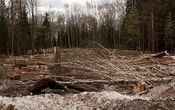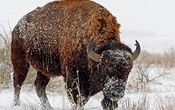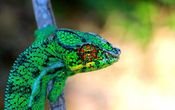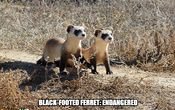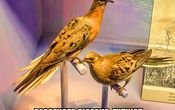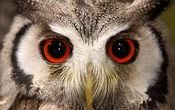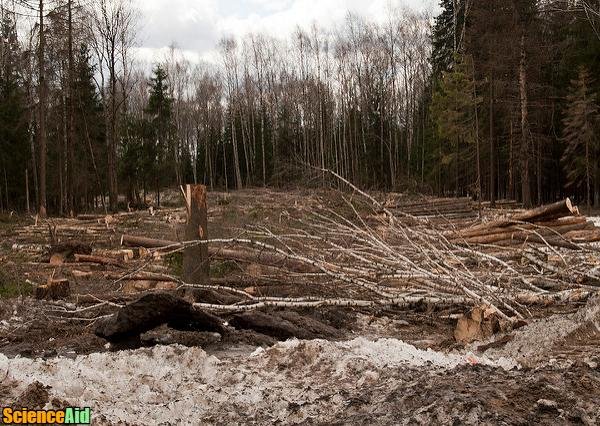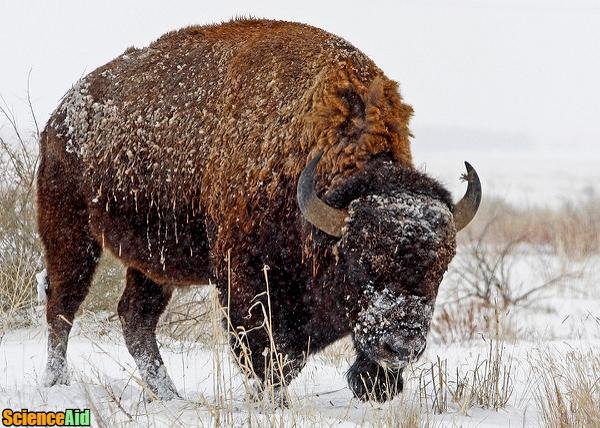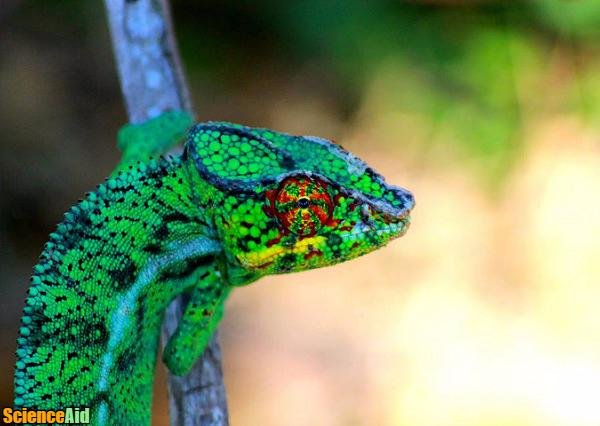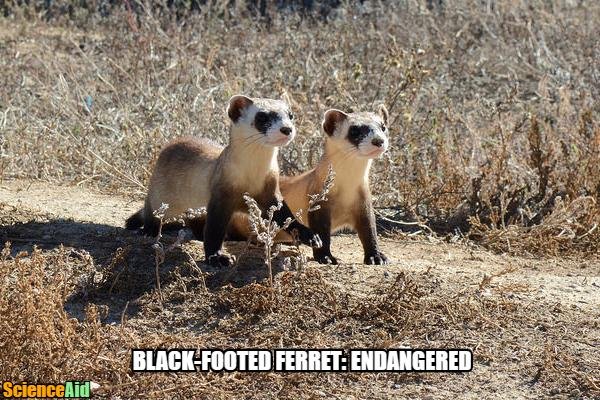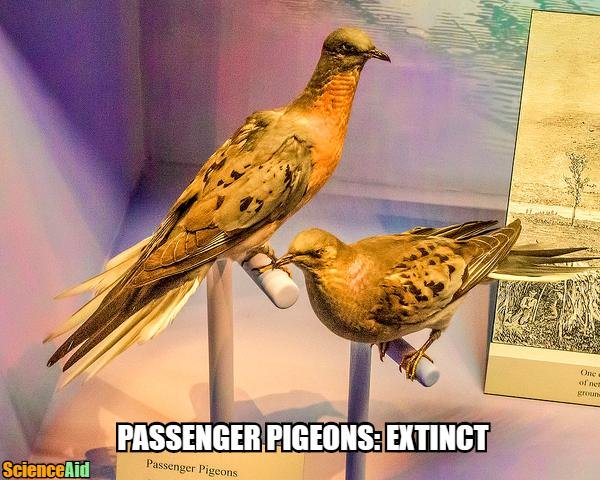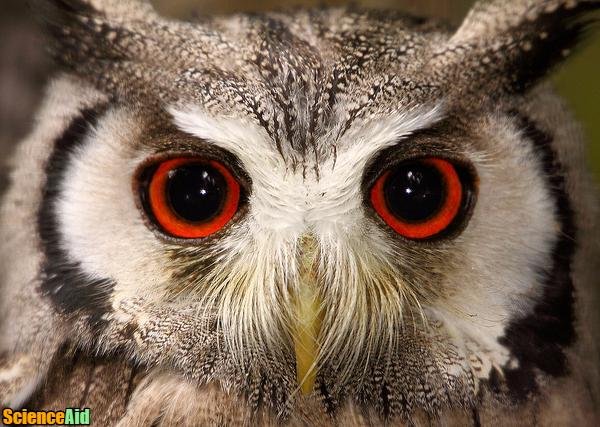Wildlife Conservation
Edited by Allysha, Jen Moreau, Sharingknowledge
Wildlife conservation is the effort to save and preserve wild animals and their homes (habitats). This conservation is a crucial practice as World Wildlife Fund's 2014 Living Planet Report[1] states that the populations of species with vertebrate (birds, fish, mammals, reptiles) have shrunk in the past 40 years by 52 percent.
It is important to note that as the world and ecosystems change, some wildlife species do naturally become extinct; however, humans have been escalating how quickly animals are disappearing from the Earth. Below you will find a discussion on what is putting wildlife in danger, two approaches to conserving animals, who is involved in preserving animal life, species that are currently endangered, animals that have already gone extinct, and why it is important that we try to save wildlife.
Factors Putting Animals in Danger
There are factors out of human control that endanger animals, such as meteors hitting the Earth (think of the dinosaurs) and ice ages coming and going (there have been 5 major ones so far). Today, humans are the biggest threat to wildlife survival.
Here are six factors that are endangering animals.
- 1What is global warming? Global warming is when the average global temperature increases. According to NASA,[2] the world's average temperature has increased by 0.8° Celsius or 1.4° Fahrenheit in the past 140 years, with two-thirds of this increase developing in the last 45 years. What does a temperature increase mean? Shorter, warmer winters? A temperature increase means weather extremes, and these climate conditions affect the Earths surface and alter habitats. For example, warmer temperatures can bring hibernating animals out of hibernation sooner, which is dangerous to their survival as they will be unable to find enough food. Here are some extreme weather examples that you may have been noticing:Climate Change and Global Warming.Advertisement
- hotter days
- extreme droughts
- violent rainfall
- fierce hurricanes
- increased earthquakes
- stronger forest fires
- 2Deforestation is the act of cutting down all the trees in an area. This may be done for lumber or to create more space for the growing human population. Clearing forests destroy habitats and food sources, displacing animals and threatening their survive. National Geographic[3] mentions that the Earth has already lost more than 80 percent of its natural forests.Deforestation.
- 3To exploit resources is to take more than is necessary or to take more than the Earth is able to reproduce. Think of deforestation, for example, and all the animals that die as a result of losing their habitats. Additionally, you can think about the fall of the Atlantic northwest cod fishery in 1992, which was a result of exploiting the cod fish resource.Exploiting Resources.
- 4The human population is continuously increasing, which means more and more resources are consumed by us, which in turn creates more and more waste, leading to pollution. Our growing population also results in the development and expansion of cities that take up land space and consumes forests.Human Population.
- 5All pollution endangers the Earth and the life on it, but two kinds of pollution that directly affect animal are toxic chemicals and plastic waste. With regard to toxic chemicals, there are pesticides that are sprayed on plants to kill bugs. Rodents will eat these toxic plants and birds will eat the poisoned bugs. Predators will, in turn, consume these rodents and birds, poisoning the predators' bodies, resulting in their death. With regard to plastic waste, you can think of the 6-pack pop rings that baby turtles get caught in. Once stuck, it is very hard for them to escape, so as they grow, their bodies will morph around the plastic and their shells will become deformed.Pollution.
- 6Unregulated hunting and poaching are hunting animals without a license and employing illegal hunting equipment, such as the use of bait or poison. This type of hunting and poaching also embodies hunting rare and exotic animals, leading to their extinction. The West African black rhino became extinct as a result of poaching.Unregulated Hunting and Poaching.
Approaches to Wildlife Conservation
How do you view animals? Are they beings that should be used for sustenance? Are they creatures that should be (largely) left alone? Depending on your answer, you will fall into either the wise use of nature approach or the preservation of nature approach to wildlife conservation.
- 1The wise use approach is sometimes called the sustainable use, and people who believe in this method would answer in the affirmative to the question, "Are [animals] beings that should be used for sustenance?" People who follow this approach want to conserve animals in order for the animals to continue to provide people with food, resources, and recreation.The Wise Use of Nature.
- 2The people who take this approach to wildlife conservation would answer yes to the question, "Are [animals] creatures that should be (largely) left alone?" These people believe that restored wildlife areas should be able to prosper on their own -- that is, without human interruption. Humans may use these areas for recreation but they may not leave any indication behind that they have done so.The Preservation of Nature.
Government and Non-government Involvement
There are both government and non-government organizations pursuing wildlife conservation.
Government Involvement
In 1980, the World Conservation Strategy, which outlines conservation actions, was created by the International Union for Conservation of Nature and Natural Resources. The United Nations Environment Programme, the World Wildlife Fund, The Food and Agriculture Organization of the United States, and the United Nations Educational, Scientific and Cultural Organization all helped with the development of this strategy. The World Conservation Strategy has three main sections: the objectives of conservation and requirements for their achievement; priorities for nation action; and priorities for international action.
Non-Government Involvement
Alongside government wildlife conservation efforts are ones from organizations who are not associated with governments. Here is a list of a few non-government organizations involved in wildlife conservation.
- Audubon Society
- Born Free Foundation
- The Nature Conservancy
- TRAFFIC
- WildEarth Guardians
- Wildlife Conservation Society
- WildTeam
- World Wide Fund for Nature
Endangered Animal Species
World Wildlife Fund[4] identifies 5 levels of being endangered: least concern, near threatened, vulnerable, endangered, and critically endangered. Let us look at where some animals stand in regard to these categories in 2017.
- 1Here is a list of a few species that are considered to be least concern.Least Concern.
- Arctic wolf
- Bowhead whale
- Brown bear
- Skipjack tuna
- Tree kangaroo
- 2Here is a list of a few species that are considered to be near threatened.Near Threatened.
- Jaguar
- Narwal
- Plains bison
- White rhino
- Yellowfin tuna
- 3Here is a list of a few species that are considered to be vulnerable.Vulnerable.
- Giant panda
- Giant tortoise
- Great white shark
- Polar bear
- Sea turtle
- 4Here is a list of a few species that are considered to be endangered.Endangered.
- Black-footed ferret
- Chimpanzee
- Sea lions
- Snow leopard
- Tiger
- 5Here is a list of a few species that are considered to be critically endangered.Critically Endangered.
- Amur leopard
- Malayan tiger
- Mountain gorilla
- Orangutan
- Vaquita
Extinct Animal Species
Commonly known species that have gone extinct are the sabre-toothed cat, woolly mammoth, and the dodo. Here is a list of recent animals that are no longer in existence. The year they were declared extinct is included:
- 1Stellers sea cow, 1768.
- 2Passenger pigeon, 1914.
- 3Tasmanian tiger, 1936.
- 4Baiji white dolphin, 2002.
- 5West African black rhino, 2011.
Why Save Wildlife?
Why is it so important that we prevent animals from becoming extinct? There are practical reasons, such as needing animals for their meat, fur, and bones. Predators also help control herbivore populations, which in turn assists in balancing the ecosystem, and humans need healthy ecosystems in order to survive.
On the creative level, wildlife helps to inspire artists. On the spiritual level, people can make connections with nature which bring them peace of mind.
Referencing this Article
If you need to reference this article in your work, you can copy-paste the following depending on your required format:
APA (American Psychological Association)
Wildlife Conservation. (2018). In ScienceAid. Retrieved Apr 17, 2024, from https://scienceaid.net/Wildlife_Conservation
MLA (Modern Language Association) "Wildlife Conservation." ScienceAid, scienceaid.net/Wildlife_Conservation Accessed 17 Apr 2024.
Chicago / Turabian ScienceAid.net. "Wildlife Conservation." Accessed Apr 17, 2024. https://scienceaid.net/Wildlife_Conservation.
If you have problems with any of the steps in this article, please ask a question for more help, or post in the comments section below.
Comments
Article Info
Categories : Environmental Science
Recent edits by: Jen Moreau, Allysha
